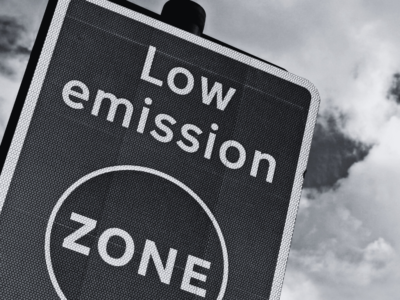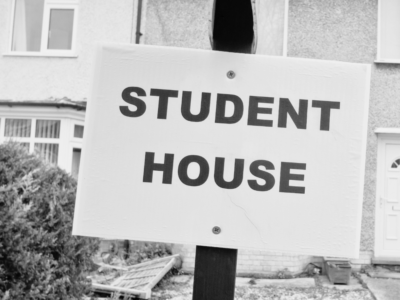The government has taken its next step in implementing a mandatory EPC C rating for all privately rented homes by 2030, and launched its official consultation into the matter on 7 February 2025.
What does it mean for the nation’s private landlords?
Previous research from epIMS found that: –
Half of private rental properties have a sub-C EPC rating
- There are an estimated 4.9 million private rental properties in England. And approximately 52% of them, or 2.58 million properties, currently have an EPC rating below C.
What’s the cost of upgrading an EPC
- According to government research*, the average cost of upgrading a property to an EPC rating of C in England is £8,000, which means it is going to cost the nation’s landlords an estimated total of £19.8 billion to upgrade all substandard properties to a rating of C.
- On a regional level, landlords in London are facing the largest upgrade bill. The capital has 1.2 million private rental properties, more than double the number found in any other region. So despite having the nation’s lowest proportion of properties that have an EPC rating of below C (44.6%), landlords are still facing a total upgrade bill of £4.7 billion, based on an average upgrade cost of £9,000 per property.
Landlords unaware of what changes they will be required to make
- A new survey of landlords in England* commissioned by epIMS reveals that 40% of landlords are unaware that today’s consultation was taking place. Furthermore, 42% aren’t aware that the minimum standard required will soon be upgraded to an EPC rating of C and over a quarter (27%) say they are unaware of what the current EPC rating is for each of the properties in their portfolio.
- EPC ratings are graded alphabetically from A to G. But an important fact that has gone widely unreported is that there is actually a numerical points system at work below the surface. For example, a score of between 92-100 SAP points gives a rating of A, 81-91 points gives a rating of B, and 69-80 points gives a rating of C.
- However, 32% of landlords are unaware that EPCs are scored using a points-based system, and a staggering 65% don’t know how many points are required to achieve an overall rating of C.
- When asked when they plan to carry out the required energy performance improvements, 15% say they’ll do it within the next 12 months, 11% say within the next four years, and on overwhelming 75% appear to be willing to wait until the last possible minute, stating only that they plan to make the improvements ‘by the 2030 deadline’.
- When asked what the biggest challenges are in bringing their properties up to the required standard, the most common response is ‘the cost of making the improvements’. The second-most common answer is ‘understanding what improvements will positively impact my EPC score’, followed by understanding to what extent they need to improve their properties to reach a rating of C.
Modern homes boast better EPC scores
- Modern homes tend to score well when it comes to EPCs, with almost 83% of homes built post-1990 currently holding a rating of C or above.
- In stark contrast, less than 39% of homes built before 1990 have so far been able to meet this grade.
- The average property with EPC D rating has an average energy bill of £2,513. By upgrading to a C, it would reduce this cost by 29% or £717 per year. Upgrading from an E rating to a C would cut the average energy bill of a property by 48% or £1,685 per year.
- The average landlord with a F rated property could reduce the average energy bill by 61% or £2,838 per year. For those with the worst rated EPC rating of G, improving their property to just a C rating would see them save a huge £4,240 per year, cutting their energy bill by 70%. That’s a potential saving of over £21,000 over the next five years.
COO of epIMS, Craig Cooper, commented:
“It’s estimated that over 2.5m privately rented properties currently hold an EPC rating of below a C and so the government’s intention to make a C rating mandatory by 2030 will have a notable impact on the current rental market landscape.
The average landlord is thought to have eight properties within their portfolio and with the average cost to bring a sub-C rated home up to compliance coming in at £8,000, that’s a potential required investment cost of £64,000 over the next five years in order to ensure their portfolio is compliant.
The worry is that forcing a mandatory EPC C rating on the nation’s landlords could cause more to exit the sector, exacerbating the current rental crisis in the process. However, what many landlords don’t realise is that an EPC rating is actually compiled using a points based system and so achieving a C rating could be well within their reach by making just a few small improvements to their rental properties.
For example, a score of between 92-100 SAP points gives a rating of A, 81-91 points gives a rating of B, and 69-80 points gives a rating of C.
This is important knowledge for landlords because it means that a property with a rating of D could be just one point, and therefore one minor improvement, away from upgrading to a C.
The good news is that there are a raft of smaller, more cost-effective changes that can be made to a property which are likely to boost an EPC rating, such as installing PV panels over internal or external wall insulation.
For those who are looking to meet that all-important C requirement, accredited energy assessors are best qualified to advise on what will and won’t work, to avoid wasting money on costly improvements .”
How’s best to improve your EPC?
The easy wins
If a property is on the very edge of breaking into an improved EPC rating, there are a number of small improvements that can be made to add the required couple of points to push the overall score into a higher rating.
For example, adding a hot water cylinder insulation adds an average of +1.7 points; a hot water cylinder thermostat adds +2.4 points; and installing low energy lighting adds an average of +1.1 points.
Prioritise points added rather than energy efficiency
It might sound counterintuitive, but adding the most sustainable features to a home isn’t always the best way to add points and therefore improve an EPC rating.
For example, a BIOMASS boiler is often said to be the most eco-friendly way of heating a home, but in terms of EPC points, they don’t score as highly as more traditional heating methods.
In fact, a standard condensing gas boiler adds an average of +23 points, whereas a BIOMASS boiler only adds +12 points. So switching from a gas boiler to a BIOMASS boiler would actually reduce EPC points despite the latter being considered the cream of the crop from an eco standpoint.
Alternative energy is one way of adding a lot of EPC points with solar panels adding an average of +9.91 points, whilst a wind turbine can add +6.39 points.
Improved insulation is another great way of adding EPC points. The go-to option is often double glazing, but not only is it expensive, it only adds an average of +3.3 points.
Bigger jobs such loft insulation (+4.9 points) and wall insulation (+7.7 points) can be far more beneficial, however, it’s room in roof insulation (+9.91 points) that is the most effective measure when it comes to improving an EPC score.
























Comments